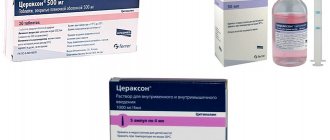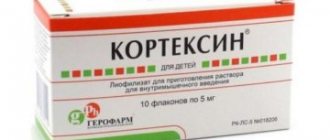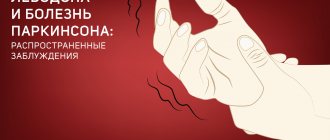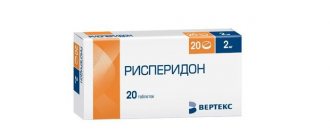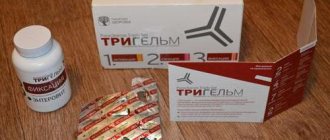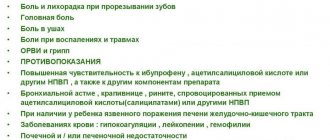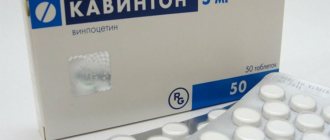Description and composition
Sodium citicoline is used as the main active element of the drug Ceraxon. The dosage of the substance in one unit of the product is determined by the release form. The range of auxiliary elements also differs.
- Tablet form: talc, titanium dioxide, castor oil and magnesium stearate, ammonium methacrylate copolymer, microcrystalline cellulose.
- Oral solution: glycerin, citric acid, glycerinformal, purified water, sorbitol, sodium citrate and saccharin, food coloring, berry essence, methylparaben, nipazole.
- Injection solution: water for injection, sodium hydroxide or hydrochloric acid.
Cheap analogues of the drug
Not everyone can afford to buy Ceraxon, so below are product analogues, or so-called generics.
A vasodilator that helps improve blood circulation.
Indications:
- treatment of psychoorganic syndrome of any origin;
- acute and chronic vascular diseases;
- inflammatory and infectious diseases of the central nervous system.
Memotropil
Helps improve metabolic processes in the brain, causes an increase in the concentration of denosine triphosphoric acid, improves memory and simplifies the learning process.
Indications:
- diseases of the central nervous system;
- circulatory disorders in the brain;
- depression.
Helps improve blood circulation, improve metabolic processes in the brain, and causes an increase in the concentration of denosine triphosphoric acid.
Indications:
- serious cerebral circulatory disorders;
- treatment of complications resulting from circulatory disorders in the brain.
Encephabol
Normalizes low levels of metabolic processes in the brain, and also normalizes the structure of neuron membranes and prevents their damage.
Indications:
- cerebral circulatory disorders;
- decreased brain performance;
- memory impairment;
- excessive fatigue.
Functions of CDP Choline
- In the body, citicoline performs the following functions: increases the density of nerve receptors;
- promotes the synthesis of phospholipids - components of neuronal membranes;
- protects nerve cells from damage and death;
- promotes saturation of brain cells with glucose, stimulating its metabolism, increasing the ATP content in tissues;
- has an anti-inflammatory effect;
- as a result of an increase in the content of acetylcholine in the structures of the central nervous system, contacts between neurons are strengthened, the conduction of nerve impulses is accelerated and mental activity is improved;
- is a strong antioxidant, reduces the number of free radicals in brain structures by affecting phospholipase;
- normalizes the course of nervous processes, improving memory, attention, concentration;
- promotes faster recovery of areas of the brain damaged as a result of injuries or strokes;
- reduces cravings for alcohol, food, drugs and other addictions.
Interaction with other drugs
Ceraxon is most often available in the following forms:
- 30 ml bottles of oral solution, colored pink, containing 10 mg of active ingredient per 100 ml of medication;
- 4 ml ampoules filled with an injection solution with a dosage of the active ingredient of 500 mg or 1000 mg;
- tablets containing 500 mg of the active element in each unit.
The most popular form is injection. However, in some cases, doctors prescribe the use of tablets or an oral solution. The required form of release is determined solely on the basis of examination of the patient and the characteristics of the course of the disease.
Medicines containing meclofenoxane should not be taken together with Cerakson. A significant increase in the effect of levodopa when combined with citicoline was also noted.
special instructions
- Crystals may form in the syrup during storage at cold temperatures. Their presence does not affect the effectiveness of the drug. Over the course of several months at normal temperatures, the crystals dissolve on their own.
- While using Ceraxon, potentially hazardous activities (driving vehicles, working with machinery, etc.) should be limited.
- You should be aware of the possible enhancement of the effect of levodopa-containing drugs.
- Do not use in conjunction with the prescription of meclofenoxate (nootropic).
Indications for use
— acute period of ischemic stroke (as part of complex therapy); — recovery period of ischemic and hemorrhagic strokes; — traumatic brain injury, acute (as part of complex therapy) and recovery period; — cognitive and behavioral disorders in degenerative and vascular diseases of the brain.
The drug Ceraxon is most often prescribed by doctors in combination with other medications to enhance the therapeutic effect and expand the range of effects. However, in some pathologies, it is possible to use the drug independently for both therapeutic and prophylactic purposes.
Do not start therapy based on the instructions for use alone. The individual characteristics of each person’s body necessitate consultation with a specialist.
for adults
The main conditions for which the use of the drug Ceraxon is prescribed for adult patients are:
- ischemic stroke in the acute phase (as one of the components of complex therapy);
- rehabilitation period after an ischemic or hemorrhagic stroke;
- various traumatic brain lesions (as a component of complex treatment and means for recovery);
- cognitive impairment and behavioral deviations as a result of the development of various degenerative pathologies and cerebrovascular diseases.
for children
The use of Ceraxon by children under 18 years of age is strictly contraindicated. This is due to the fact that there are not enough reliable clinical studies regarding the safety of using the medication in this group of patients.
for pregnant women and during lactation
Due to the fact that the safety of Ceraxon use by pregnant and breastfeeding women has not been clinically proven, the use of this drug for therapeutic or prophylactic purposes is undesirable. However, the doctor can still prescribe the use of a certain dosage of Ceraxon during these periods, if only the benefits of the drug for the woman outweigh all possible risks.
Due to the relatively high activity of citicoline, the determination of the appropriate therapeutic dosage of Ceraxon should only be carried out by an experienced physician based on the results of the examination of the patient. The same applies to the use of the product for the purposes of prevention and recovery.
Ceraxon injections are recommended to be administered slowly. The administration time varies from 3 to 5 minutes depending on the therapeutic dose. When administered intramuscularly, it is important to avoid injections in the same places. A drip method of infusion of medication is also possible. In this case, the administration of Ceraxon should take place within 40-60 minutes.
For acute ischemic stroke or various brain injuries, it is recommended to take 1000 mg of citicoline twice a day with an interval of 12 hours. The treatment period should not last less than 6 weeks. If prescribed by a doctor, it is possible to switch to the oral form of Ceraxon 4-6 days after the start of treatment.
During the recovery period after a stroke and TBI, as well as for various cognitive and behavioral pathologies, it is recommended to take from 500 mg to 2000 mg of citicoline per day. The dosage should be divided into two doses. The amount of the substance is determined by the patient’s condition and the characteristics of the disease.
Side effects
Citicoline, which is the active component of Ceraxon, exhibits fairly high medicinal activity. In this regard, improper use of the drug entails the development of various side effects. However, if you follow the dosage regimen prescribed by your doctor, the likelihood of their occurrence is significantly reduced. The main side effects include:
- severe dizziness;
- acute headaches;
- attacks of hallucinations;
- difficulty breathing (dyspnea);
- vomiting and feeling of nausea;
- hypertension or hypotension;
- rapid heartbeat (may be accompanied by pain);
- anaphylactic shock (extremely rare);
- diarrhea;
- itchy allergic skin reactions;
- Quincke's edema (extremely rare).
The most common side effect after taking Ceraxon is a general painful state of the body, accompanied by chills and weakness.
Let's study the instructions for use for the drug Ceraxon.
Mode of application
It is worth considering that the method of application depends on the type of substance:
- A substance for intravenous administration is used by slowly injecting the medication intravenously (over 3-5 minutes in accordance with the prescribed dose). If the intravenous drip method is used, then the infusion should occur at an infusion rate of 40-60 drops/min. For elderly patients. When prescribing a prescription to elderly patients, no dosage adjustment is required. The Ceraxon product can be used with all types of intravenous isotope and dextrose solutions.
- Substance for oral administration. Before use, the medicine can be diluted with water (115-125 ml). The method of administration by injecting the drug into a vein is considered more common than intramuscular administration of the drug. When administering a substance intramuscularly, it is recommended to avoid injecting the drug into an area of muscle tissue that has already been used to administer the drug previously. The substance in the ampoule is used once. After opening the ampoule, the medicine should be used immediately.
Release forms
The international name for Ceraxon is Citicoline.
The drug is used for acute circulatory disorders of the brain, removes the consequences of brain injury such as memory impairment and attention, etc.
Citicoline improves the functions of neuronal membranes. including helping to improve the functioning of ion exchange pumps by stimulating the natural synthesis of structural phospholipids in the human body.
Thanks to its stabilizing effect on membranes, Ceraxon reduces brain swelling. The drug is used for acute cerebral circulatory disorders, removes the consequences of brain injury such as memory impairment and attention, etc.
Pharmacokinetics
Since Citicoline is a natural compound found in the human body, it is impossible to determine the pharmacokinetic properties because endogenous citicoline and endogenous citicoline cannot be separated.
Research has shown that the method of introducing the drug into the body does not matter. That is, the bioavailability is exactly the same whether you take it by entering the gastrointestinal tract or by injection. Through research, it was found that Ceraxon is 99% absorbed in the gastrointestinal tract.
Removal of the drug from the body takes a long time and is carried out through the respiratory tract or through the kidneys. After 5 days of taking the medicine, about 16% was found, to which we can say that the rest was involved in metabolism.
Contraindications
Instructions for use indicate that Ceraxon should not be taken if:
- sensitivity to individual components;
- not recommended for use by patients with high tone of the parasympathetic nervous system;
- patients under 18 years of age (due to lack of clinical studies);
- rare genetic diseases that lead to fructose intolerance.
Use of the drug for renal and liver dysfunction
No dose adjustment of the drug is required.
Mechanism of action
Mode of application
Release forms
Stroke is one of the few terrible diseases that you simply wouldn’t dare wish on even your worst enemy. It is characterized by severe disturbances in the activity of the part of the brain that was affected.
As a rule, patients with this disease not only lack motor activity, but also experience loss of speech, perception of the surrounding world, and even loss of one of the senses. This is not to say that it is impossible to get rid of this - getting rid of it is possible, but the whole point is that complete recovery of patients occurs in very rare cases.
Use of Ceraxon as part of a medicinal complex:
- Acute period of traumatic brain injury;
Which drug is better Recognan or Ceraxon
Ceraxon and Recognan are drugs from the group of nootropics. They have a beneficial effect on the higher integrative functions of the brain - they improve mental activity, attention and memory, and increase the resistance of cells to hypoxia. Nootropics are prescribed during the recovery period after a stroke and traumatic brain injury, and are used in the treatment of vascular pathology of the brain and for other conditions. They are well tolerated and enjoy well-deserved recognition in neurological practice.
We looked at the instructions for use and found out that Ceraxon and Recognan are similar in composition, indications and contraindications. An analysis of clinical studies showed that these drugs practically do not differ in the principle of their effect on the human body. They are interchangeable, and in most cases the patient will not notice the difference. The selected drugs differ only in price: Recognan is cheaper than Ceraxon. Neurologists say that in this situation a replacement is justified. Tests have shown that cheap Recognan is not inferior in effectiveness to Cerakson.
Contraindications
for adults
for children
The list of prohibitions on the use of Ceraxon for treatment or prevention is not long. The main conditions in which the use of the drug is contraindicated are:
- intolerance and hypersensitivity to drug substances;
- increased tone of the parasympathetic nervous system;
- children under 18 years of age;
- pregnancy and breastfeeding period;
- hereditary fructose intolerance.
Is there an effect?
There is ongoing debate among scientists about the effectiveness of nootropics in the treatment of brain diseases. Experts from our magazine analyzed scientific articles and found out that doctors’ opinions differ. We present to your attention the most famous works.
The International Randomized Placebo-Controlled Trial (ICTUS) found that citicoline is not effective in the treatment of moderate to severe acute ischemic stroke. The testing involved 2,298 patients from Germany, Portugal and Spain - and this is a fairly large sample.
In the Russian Medical Journal, domestic experts analyzed the results of the ICTUS study and came to the conclusion that it is impossible to speak unequivocally about the low effectiveness of citicoline. They emphasized that the negative result could be associated not only with the effect of the drug, but also with the inflated expectations of scientists. They particularly noted the following aspects:
About 67% of the subjects were over 70 years old. At this age, the prognosis of the disease is worse and the risk of complications is higher.
The study included patients with severe and moderate disease. In other studies, where the sample included mild cases of stroke, the result was better.
46% of patients received systemic thrombolysis, which may have biased the study results.
Russian scientists have concluded that citicoline can be used in patients with ischemic stroke who are not receiving thrombolytic therapy (drugs to break up the blood clot).
The journal Neuronews presented the results of a comparative study between Recognan and Ceraxon. The tests were carried out by specialists from the First St. Petersburg Medical University. They found that both drugs were equally effective in treating the consequences of traumatic brain injury.
The journal “Attending Physician” published an article showing the effectiveness of the drug Ceraxon in the treatment of chronic cerebral ischemia and dementia.
Perhaps in the coming years, scientists will provide new developments on this topic, and then the question of the effectiveness of citicoline will be closed.
